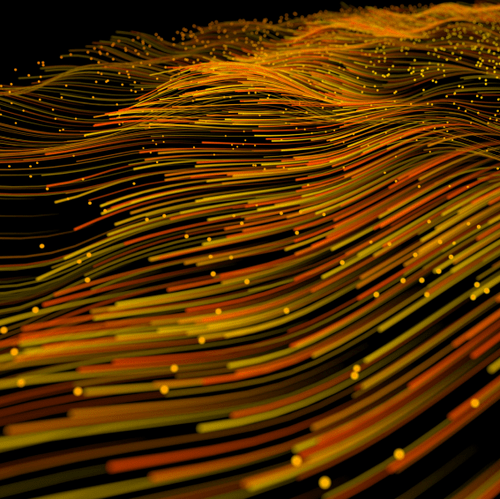Summary – Faced with legacy systems on their last legs, exposing the company to security gaps, recurring outages, runaway technical debt and maintenance costs that stifle innovation and agility. When repeated failures threaten continuity, the monolithic architecture can’t absorb growth or a critical component reaches end-of-life, modernization becomes urgent through redesign, encapsulation or phased migration strategies relying on open-source microservices and integrated cybersecurity standards.
Solution: launch an expert audit, prioritize modularizing your business domains and deploy an open, modular, sustainable architecture to turn your legacy IT into a competitive advantage.
Swiss companies often rely on legacy IT applications and infrastructures dating back several decades. While these legacy systems are at the core of business operations, they also represent a serious obstacle in the age of digital transformation: security vulnerabilities, growing technical debt, lagging performance, and high maintenance costs. How can you tell when and how to modernize these critical tools? Here’s an overview of the challenges of legacy systems and strategies to modernize them effectively and sustainably.
Legacy systems: definition and current challenges
Critical but aging tools, posing risks in security, performance, and costs.
A legacy IT system refers to old software, applications, or infrastructure that remains in use within the organization, despite the availability of newer and more modern versions (or alternatives). These solutions have long proven their worth, supporting critical business processes. However, their outdated technology leads to the accumulation of technical debt (complexity and technological lag).
These legacy systems present the following challenges
- Security and compliance: Old systems no longer receive updates, making them vulnerable to cyberattacks. Known but unpatched vulnerabilities expose sensitive data and may violate current security standards.
- Performance and reliability: Over time, aging applications slow down and become unstable. Long response times, repeated outages, and bugs disrupt team workflows, lower productivity, and degrade the customer experience.
- High maintenance costs: Keeping an obsolete tool running becomes increasingly expensive. Corrective maintenance consumes growing resources: developers spend time patching vulnerabilities and working around system limitations, and organizations must pay high fees to extend vendor support or find rare expertise. In the end, every franc invested in keeping an outdated technology alive is a franc not invested in innovation.
- Reduced compatibility: In a constantly evolving digital environment, old software struggles to integrate with modern tools. A legacy ERP, for example, may be unable to exchange data with a modern e-commerce platform or cloud services, creating information silos and slowing the company’s digital transformation.
- Barrier to agility and innovation: Finally, a legacy system limits organizational agility. Developing new features or deploying innovative solutions becomes slow, expensive, or even impossible. Meanwhile, more flexible competitors gain an advantage in the market.
In short, continuing to rely on an outdated application stack exposes the company to increasing risks while…
IT modernization: when does it become essential?
Frequent outages, blocked growth, and stifled innovation: symptoms you should not ignore.
No system lasts forever. But how can you tell when it’s time to modernize your outdated tools? Certain warning signs indicate that IT modernization of your application landscape is necessary:
- Repeated failures: More frequent outages or serious incidents (shutdown of a critical application, data loss) are alarm bells. When the reliability of a legacy system becomes a risk to business continuity, it’s time to act promptly to avoid a catastrophic breakdown.
- Unmet scalability needs: If your business is growing but the existing system can’t keep up, that’s another key indicator. For example, growth in the volume of users or data can overwhelm an aging application not designed to handle it. Similarly, if adding new features or integrating modern tools (mobility, cloud, analytics) is too complex or even impossible, this technological gap hinders your expansion.
- Barrier to innovation and digital transformation: A legacy system often hampers a company’s digital strategy. If it’s an obstacle to launching new online services, automating processes, or leveraging data in real time, it blocks innovation. Your IT leadership spends more time working around legacy limitations than creating value—a clear sign that modernization is needed to unlock initiative.
- End-of-life technology: Finally, the decision to modernize becomes inevitable when one of the critical components reaches its end of life. If the vendor announces the end of support for a key software or infrastructure, the status quo becomes too risky: continuing with an abandoned technology (no updates or support) is not viable.
In practice, if any of these signs are present, the question is no longer if you need to modernize, but when. Rather than waiting for the next crisis, it’s better to start modernization proactively: it’s always wiser to act a year too early than a day too late.
Edana: strategic digital partner in Switzerland
We support companies and organizations in their digital transformation
How to modernize? Possible approaches and a real-life example
Full rebuild, encapsulation, progressive migration…: choosing the approach suited to your context.
There’s no universal recipe for modernizing a legacy IT system. The optimal strategy depends on your business context, the state of the existing system, and your objectives. Common approaches include:
- Full rebuild: Rebuilding the system from scratch using modern technologies. This option provides a fresh solution without legacy constraints, but it’s long, costly, and risky. The transition must be carefully planned to avoid any disruption of operations during the switchover.
- Encapsulation: Retaining the core of the legacy system while surrounding it with new layers (APIs, modern web interface, etc.) to reuse its functions in current use cases. This is often a transitional solution that brings short-term improvements (e.g., exposing data to a mobile application) without modifying the old code. However, this approach doesn’t eliminate the underlying technical debt: the old system remains in the background.
- Progressive modernization: Renovating the system in successive stages rather than all at once. For example, gradually extracting certain critical modules from the monolith and rewriting them using a modern and modular architecture. The new coexists with the old, allowing the prioritization of components to be modernized and delivering improvements without interrupting service.
Real-life example: A Swiss logistics company turned to Edana to modernize its legacy operational system. Instead of opting for a risky global rebuild, a phased modernization approach was chosen. After an audit of the existing system, our experts isolated several critical areas (orders, inventory, invoicing) and rewrote them as independent microservices. These new modules, developed with modern technologies, were integrated with the remaining legacy system without interrupting operations. In less than a year, reliability significantly improved, maintenance costs decreased, and order processing became four times faster. Most importantly, this modernization opened up new opportunities: the company was able to launch a mobile application and connect partners.
Towards a modern, open, and sustainable software architecture
Open source, custom-built, scalability, and security: the pillars of a responsible modern IT system.
Modernization is not just about replacing an outdated system with a new one: it’s about rethinking the software architecture to meet the company’s future needs. Here are some guiding principles to prioritize for a modern and sustainable IT system:
- Openness and open source: Avoid locking yourself into proprietary technologies. Prioritize open source solutions and open standards, which offer transparency, flexibility, and an active community. Open source also helps reduce costs (no licensing fees) and prevents dependency on a single vendor.
- Hybrid custom-built: Aim for a balanced approach between existing components and custom developments. There’s no need to reinvent the wheel: leverage proven tools and frameworks for standard needs, and focus custom development efforts on what makes your business unique. This hybrid approach ensures an adapted, scalable solution without starting from scratch for every function.
- Modularity and scalability: Favor a modular architecture (microservices) so each component can evolve independently. An IT system structured in loosely coupled modules facilitates scaling, regular updates, and the addition of new features. This results in a flexible software foundation, ready to absorb future changes.
- Integrated security and compliance: With constantly evolving cyber threats and regulatory requirements, security must be a foundational element of any new architecture. Adopt cybersecurity best practices from the design stage (data encryption, access controls, proactive monitoring) and ensure your new solution complies with relevant standards and regulations.
- Digital responsibility: Finally, think sustainably. Successful modernization fits within a framework of sustainable IT development. In practice, this means an energy-efficient infrastructure (optimized cloud, eco-designed code), extending the lifespan of solutions (facilitated maintenance, complete documentation), and ethical data governance. Adopting a responsible architecture helps reduce the environmental footprint of IT while enhancing societal value.
Transform your digital ecosystem into a future-ready asset
Modernizing legacy IT systems has become essential for driving digital transformation and ensuring long-term business resilience. Done effectively, it helps reduce technical debt, unlocks innovation, and drives value creation.
There’s no universal formula: each organization must identify the right approach for its unique context, leveraging key principles such as open architecture, tailored development, security, and sustainability. Expert guidance can be the key to navigating this complex transition smoothly.
Are your legacy systems hindering your strategy? Engage our team of Swiss experts: a flexible, open-source-driven, custom development approach will turn your IT/software infrastructure into a competitive edge for the future.







 Views: 2024
Views: 2024